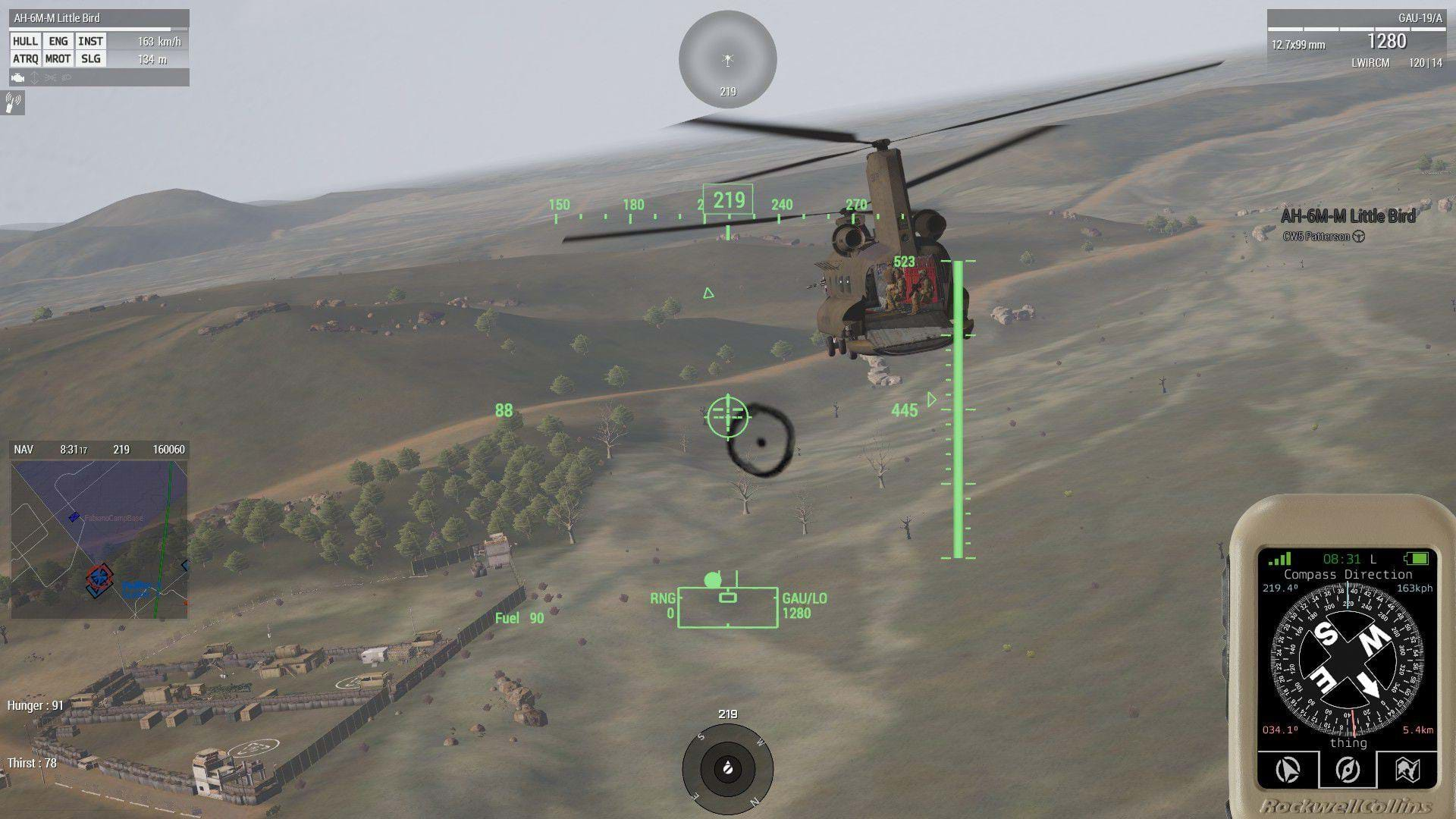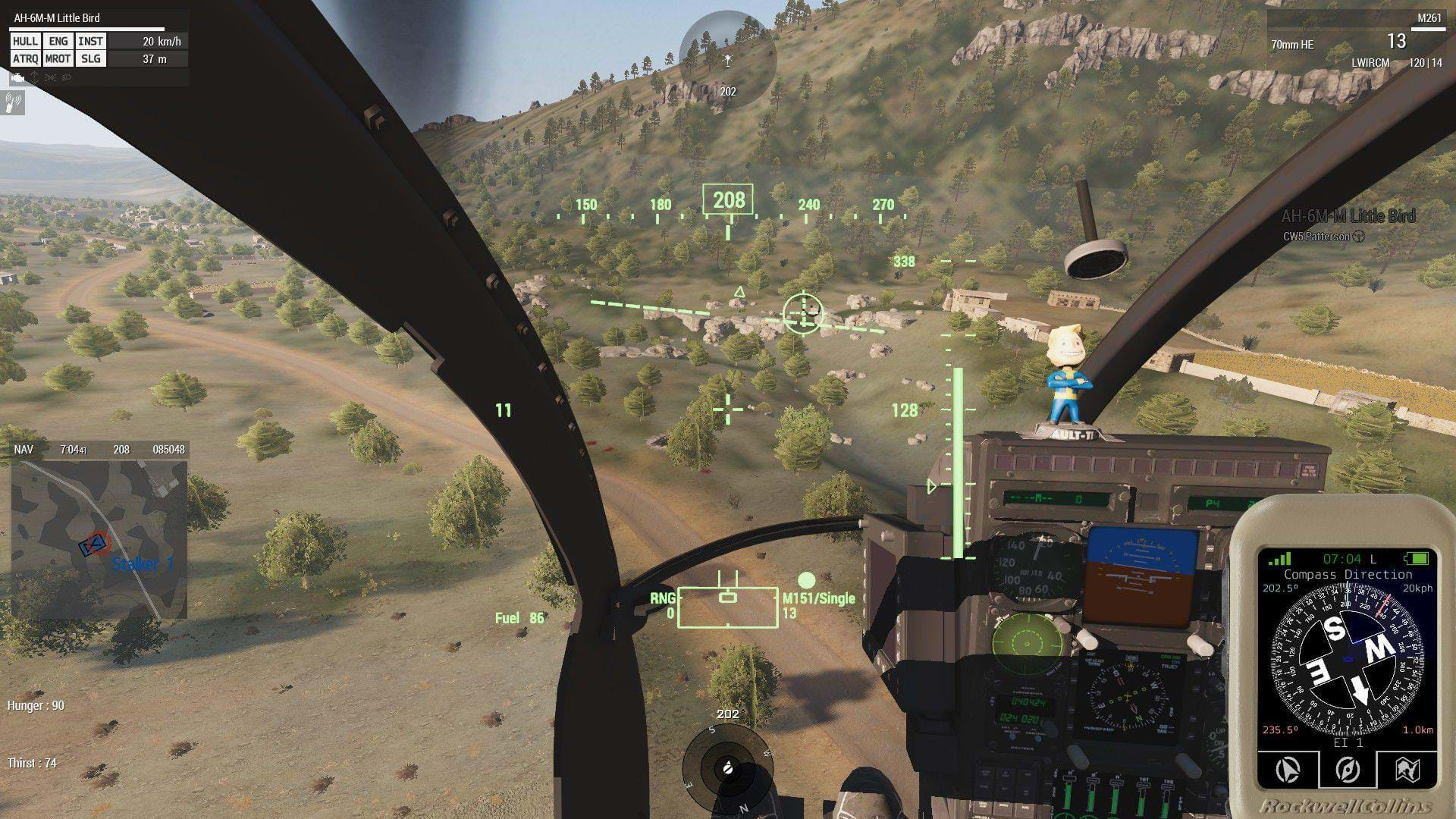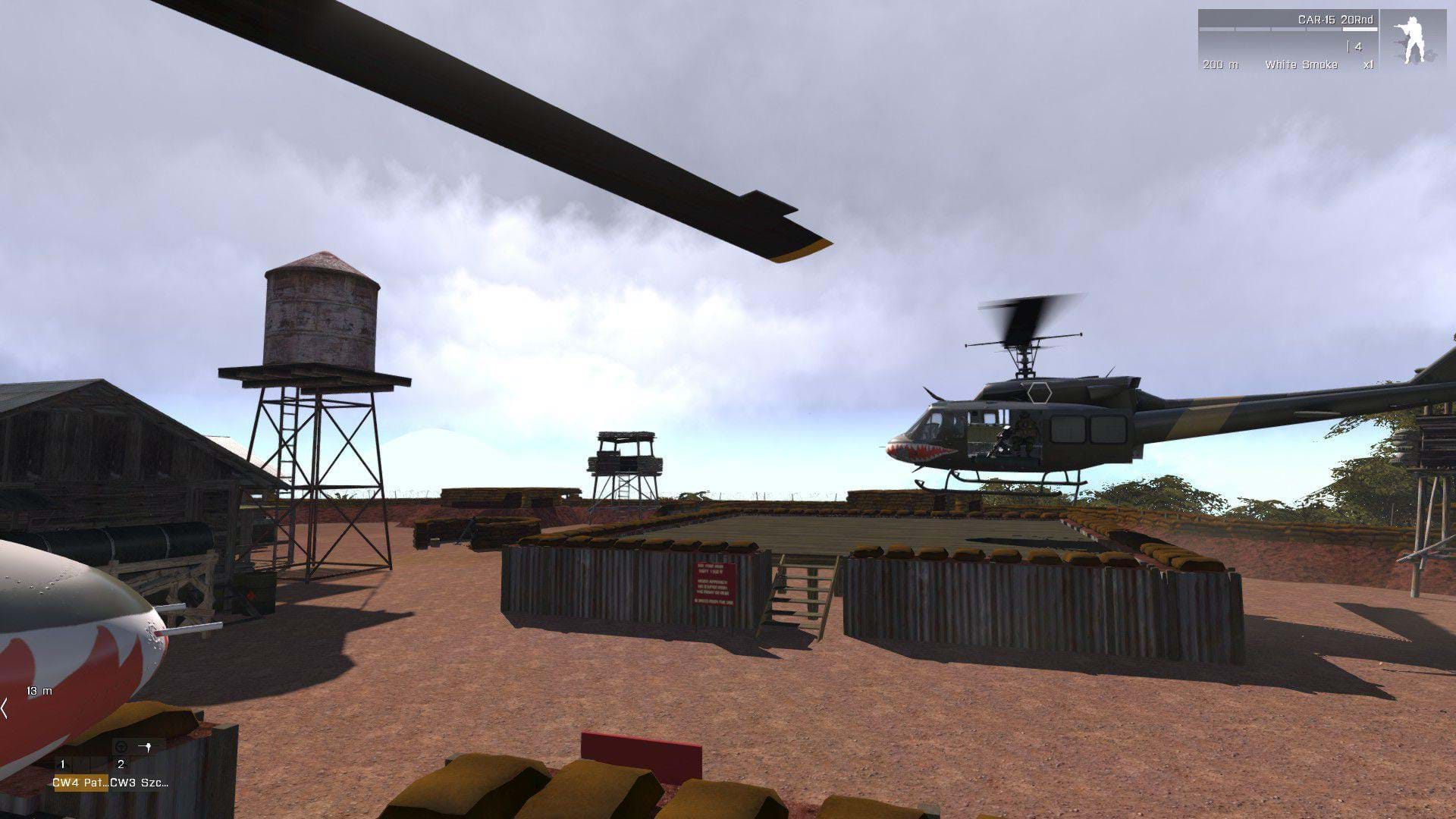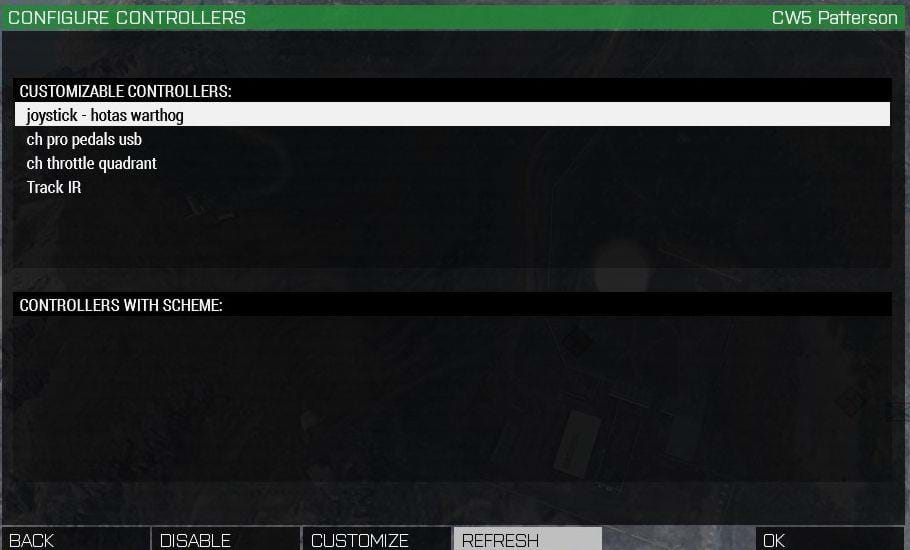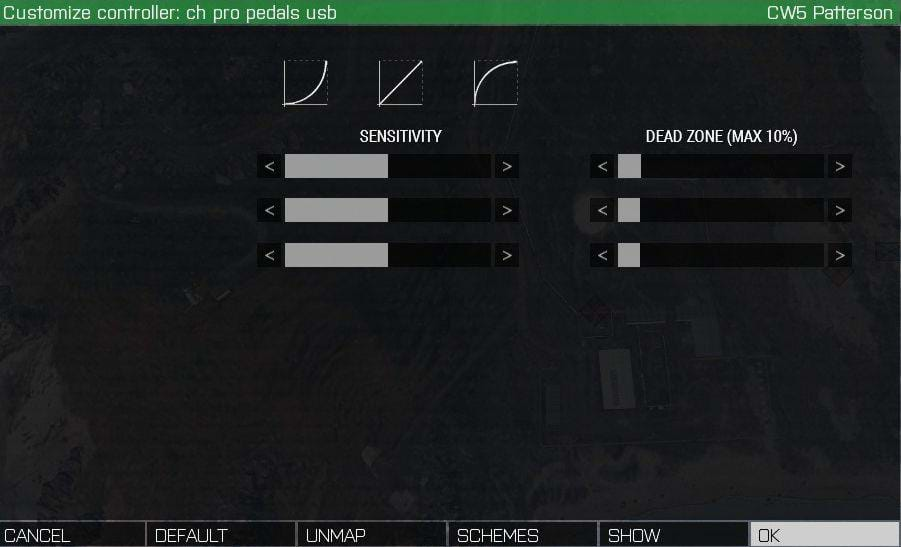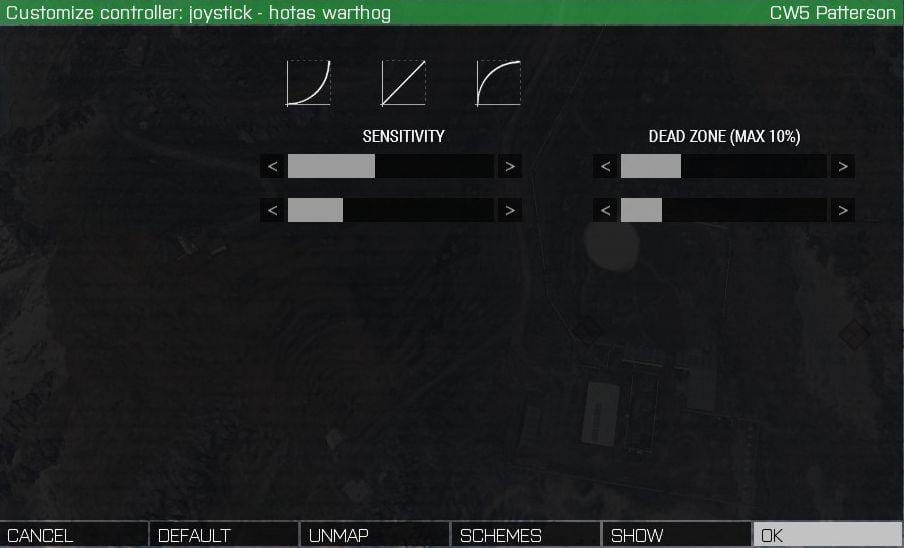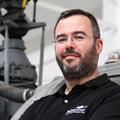Before we start, I have to say this: this was not supposed to be an interview. I am a very casual ARMA III player (really casual -- I barely boot up the game) and I've always wanted to give it a bit more of exposure. It's unfortunate that systems are not conveniently modeled in the game as there's a lot of potential.
Transporting your friends, doing CSAR missions with real people on the other side of the world and, in a general sense, being part of a team is a great feeling. It's too bad that we won't see any major developments regarding the said systems, weapons and flight model.
When I first approached the 160th, Bob Patterson was very nice and patient with me as I made him some initial questions, asked for his website among other preliminary boring stuff.
After that, when I was a bit more comfortable about the team I sent him a few questions in order to further increase my knowledge of what is it that those folks do and be able to present it to you – our reader – so that I could both make justice to the team and provide you with good information.
The answers that came from Bob blew my brain up. He was so thorough and complete, demonstrating such a passion and such an involvement with the team that I felt like it was just too good of a piece of material not to give you direct access to his words.
I give you the interview that wasn’t supposed to be. Here we go.
Hello Bob. Thank you so much for answering our questions. So, how did it all started for the 160th?
The gaming group (full name: 75th Regimental Reconnaissance Company) was formed out of several players that had played Project Reality together and were looking for a higher level of fidelity in the environment, and Arma 3 was chosen.
The type of group would reflect its real counterpart: Small experienced teams of veterans, engaging in special operations, recce, direct action raids and the like. And like the real 75th Ranger Regiment, relied extensively on the services of the 160th Special Operations Aviation Regiment for helicopter transport and fire support.
That's where I came in. I'm a long time Arma series player going back to the 2007 game, as well as MSFS and DCS (A-10C and Huey), and loved the rotary wing experience. I was asked to put together a detachment of top quality sim pilots to fly with the same level of professionalism and precision that the real SOAR does. And off we went.
The 160th is attached to the 75th, is that correct? How does it work in terms of ranking/internal organization?
We are an "attachment" notionally, as we support the recce teams, but in fact we are all members of the same organization, and enjoy hanging out together. Our ranks reflect the real-life counterparts. I am a Chief Warrant 5, though I answer to our group's overall leader, Justin LeClair who has the rank of First Sergeant. The reality is our jobs and responsibilities define us more than the ranks.
So, you are the one in charge?
Yes. I'm the founder of the flight section and the flight lead. But all the pilots are self-motivated and disciplined and we can all operate as individuals if needed. I'm lucky to have some great people in the section. One is a Commercial helicopter pilot (beginning his CFI I believe) who has a lot of R22 and R44 time, and of course he is the chief instructor for us. I also have a PHD candidate in Chemistry who has been in the Arma franchise longer than me. We have some other great pilots as well, and we are HIGHLY selective.
What helicopters do you use on your missions?
We simulate the real 160th SOAR so we operate the MH-6M and AH-6M Little Birds, the UH-60 Blackhawk and the CH-47 Chinook. There are several high-quality variants built by the talented modding community in Arma 3, and our aircraft come from the well-known RHS mod. We don't have true MH-60s or MH-47s yet, but we are always on the lookout for aircraft with suitable flight models and functional instrumentation.
How is the team organized? Being 5 that means that you don't have a big chance to play on 2-man helicopters, right? Or do you have enough variety so that you can do so?
Believe it or not, we frequently rely on 2-man crews, especially in the fabulous Little Birds we fly, as the right seater can operate a FLIR pod and targeting laser. We use that system for enhanced ground reconnaissance and to "buddy lase" for ground teams or even fixed wing aircraft (if we have any guest players in a mission). In the larger airframes, especially the Chinook, we need a second set of eyes in the rear to spot for the pilot in a confined space landing. Other times, there is too huge a workload for us, and we do run single crews all night.
How many helicopters are usually deployed on missions?
Our play sessions typically run from two to four hours, and can encompass two or three different missions. Meaning start to finish: the planning phase, insertion, execution, extraction and full debrief. On those nights we will run three or four airframes. We nearly always have at least two AH-6Ms in the air to provide gunship support.
Do pilots always fly the same type of helicopter or do you rotate? How does that work?
I usually leave it up to the pilots. My real-life pilot gets the most difficult aircraft of course! Some prefer running the Blackhawks or Chinooks. I tend to enjoy flying the Little Bird, but each aircraft has its own performance characteristics and challenges.
Above all, the mission type dictates the aircraft we run. Lately since the ground teams are operating out of little 6x6 ATVs, I tend to fly a Chinook that can carry up to three of them.
What kind of missions to you perform in ARMA? Are you usually part of all the team's missions?
The best part of Arma 3 are the fabulous terrain maps made by the userbase. The most recent one is called LYTHIUM, and is based on an area of Nangarhar Province, Afghanistan. The terrain ranges from a flat river valley to mountaintops, and varies up to 3,000 feet from one area to the other. It's probably 20 miles square. Average flight time at 110 knots is almost fifteen minutes from end to end.
Our ground teams have run all kinds of missions, from High Value Target capture to close range recce, to hostage rescue. Lasing for fixed wing or calling in rotary wing fire is a nightly staple. There are also a large number of AI controlled Taliban and Afghan military units that we operate near, and the AI can be unnervingly realistic.
If our ground teams are out there, we are in the skies above them. We do troop insertions and extractions, gun and rocket runs, MEDEVAC runs and reconnaissance from the air. Every night is different.
How often does the 160th practice? Do you have session where you train by yourself and others with some other elements of the 75th?
Of late, we haven't been able to have dedicated training nights, but earlier this year we trained pretty hard. Among the pilots we've worked on almost everything, from basic startup and taxi to airfield and pattern operations, and even LTE and autorotations. We're constantly working on confined space landings, formation flight, aerial gunnery and hillside landings.
We keep a spreadsheet on each pilot, and have an inventory on all the relevant skills for each airframe. Until a pilot reaches a basic proficiency level, they may not be the PIC for that type.
Our ground teams have JTAC roles, and we train with them on proper procedures for calling fire or landing zones. They use colored smoke, IR grenades, lasers and 8-digit grids to call us in for missions. They generally use 5 lines and 6 line briefs. If an emergency comes up, a quick radio call and smoke grenade is all we need to get there.
How does a training mission usually go? Can you break it down for us?
We will have a goal for the evening, and practice that skill all night. We have an "instructor script" in which the non-pilot seat can kill the engine or tail rotor, and the flying pilot gets to practice their emergency procedures. Or we might have formation flying night, including formation landings in all kinds of terrain, from wooded areas to city streets.
We'll also practice our gunnery, and work on learning the characteristics of our weapons at various ranges. Mostly we use miniguns or rockets, and practice engaging light vehicles or infantry from up to a kilometer away.
A lot of that training happens at night, using night vision, which introduces its own complications. Then we'll spend a night training with the ground teams, practicing rooftop or fast rope insertions, MEDEVAC landings under fire and extractions, and danger close attack runs.
When training or in live missions we always stress proper communications procedures, including position calls within the pattern. Some nights the airspace can get pretty congested. Each pilot is responsible for visual separation, and good comms helps everyone fly safe!
What would say is the hardest part of flying as a team in the ARMA environment?
Arma is heavily CPU dependent, despite all the modern graphics cards. Very often our view distances are limited to only several kilometers. Also, the default units of measure in the game engine are metric.
Casual pilots will measure their speed in Km/Hour and their altitude in meters. But we forced ourselves to focus on the instruments and think in feet and knots. Now we have better instrumentation and can monitor both MSL and AGL altitudes as well as indicated airspeeds. In that environment, the challenge is to fly with real world precision and safety, while aggressively accomplishing the mission. That takes personal discipline and pride. Our pilots have both in bucketloads.
How do you receive new pilots? What happens when someone new joins?
When someone expresses interest, I usually contact them via email to have a short conversation, and then we invite them on for a weekend of playtime. If they work out, and fit in with our play style, they become a Candidate. After another weekend or so of consistent high-quality gameplay, they will be made a Warrant Officer and put on the active roster.
New pilots spend the majority of their time in a co-pilot role, operating a FLIR system or managing a crew chief position. When they have proven their skills with given aircraft types, they can take the Pilot in Command role. I typically get one or two new pilots per year. Currently we have five pilots on the roster.
Are you looking for more pilots? How to apply?
We are always looking for talented sticks! I would love to be able to have full crews every night for all needed aircraft. The best way to apply is to contact me at mailto:bpatterson407@gmail.com and visit our site and fill out an application. I will take a close look at your Steam profile to see your experience level in Arma 3 and any other similar titles, like DCS, FSX and so on.
On a bit of a more tech side, some people (me included) may be curious about the next questions. What flight model do you use (basic or advanced)?
We don't run AFM in multiplayer. It is too unforgiving and unreasonable in some aspects. While we would love to have VRS, translational lift and a more advanced damage model, we content ourselves with the basic flight model. It's quite good in some respects and rewards proper pilotage with a well balanced helicopter "lite sim" experience.
What hardware do you use?
I run the Warthog HOTAS stick and throttle, CH Pro Pedals and TrackIR. Although currently my throttle has problems, so my old CH Throttle Quadrant is serving for collective control. Other of our pilots run the Saitek X52 and even good old mouse and keyboards. They still fly safely and effectively.
Can you show us your settings? Sensitivity, nullzones, etc.?
Sure. You can see my settings on the images above. I should add that I use a freeware program called JoytoKey, that translates some of the Warthog joystick buttons to keyboard emulation, because Arma3 doesn't know all the functions of the HOTAS. Mostly I use that for the communications keys in game.
Bob, once again, thank you so much for your time and answering our questions. Would you like to finish by giving other ARMA III helicopter pilots some tips?
Practice, Practice, Practice! Get in the editor, make a simple mission and fly around. Learn all the helicopters and their unique behaviors. Try to maintain consistent altitudes and speeds, and practice safe landings in all possible terrain. Become comfortable with flying at night, with and without night vision. Push your skill set in practice, and fly conservatively in multiplayer missions. It takes time but it is worth the effort. Stick time is stick time!
Learn more about the 160th
You can learn more about the team at their official website and this YouTube channel.

